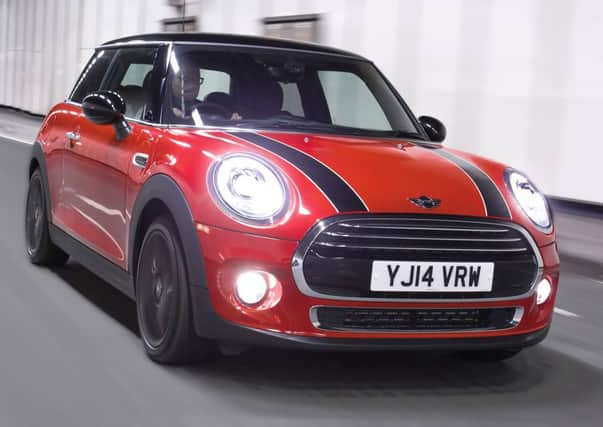First Drive Mini Cooper D


Countless years on, I’ve just spent a few days with the very latest Mini, which is a complete transformation from the original.
In fact, that’s exactly what the bosses of the BMW-owned Mini operation call the latest version – “The New Original”… distinctly familiar, yet fresh from the ground up. They’ve done this before when they first introduced the revitalised car in 2001, refreshed it in 2006 and once again now.
Advertisement
Hide AdAdvertisement
Hide AdSo what’s different about the new car? Well, it’s more spacious than before, and the company says it’s even safer and finished to a higher standard with a “more dynamic and performance-oriented experience behind the wheel”. And I have to agree. The car feels fresh, gives a great drive and has lots of nice new features to make life in the driver’s seat better. Mini claims new technology means the car is the most connected in its segment. A huge, round, 8.8-inch display, where the iconic speedo sat on the original, contains all the information the driver needs, including on the test car, the tried and trusted BMW navigation system, operated through a rotary controller in the central panel beside the handbrake.
Dramatic LED lighting around the display gives feedback to the driver. For example, when Park Distance Control is operating, the remaining distance to obstacles is shown by a ring of light in green, yellow or red. Changing the car’s driving mode alters the lights to green, orange or red. Route guidance information from the satnav is also backed up by lights. The closer the car gets to the turn-off point, the smaller the lit-up area around the edge of the central instrument.At first, it’s a touch confusing but once you get the hang of it, it’s not just pretty clever, it’s also helpful.
The test car was the impressive Cooper Diesel which has a lot of extra equipment but keyless-go is now standard across the range. I liked the start/stop toggle switch – just like the ones on my first Mini – in the middle of the centre console. But again it has fancy lights with a heartbeat pulse before the engine is started. Some other switches have been moved from the centre, including the ones for the electric windows, which are now in a much better place in the door trim.
The new car still has the same overall design and classic profile but is bigger than the previous model – 98mm longer, 44mm wider and 7mm taller – and the wheelbase has been extended by 28mm. The track width has been increased at the front by 42mm and at the rear by 34mm.
That means there’s more room inside for up to four passengers with extra shoulder space and larger footwells. I did one journey with four full-size adults onboard and although it wasn’t luxurious, no-one complained about feeling cramped. Fortunately, nobody had luggage because the boot space is still pretty limited.
The test car came with £610 optional LED headlamps, an LED daylight driving ring and LED rear light clusters. Making up the rest of the £5,000-worth of options were Media and Chili Packs, £250 for the Blazing Red paintjob and while the contrasting white roof and door mirror caps come as standard, it was an extra £80 for two bonnet stripes.
There’s a choice of three brand-new engines and the three-cylinder diesel version in the test car was very impressive although I couldn’t match the claimed economy of 80mpg, with my figure nearer the 60mpg mark.
Under the surface, the suspension has also been revised to improve what has always been the Mini’s agility, response and precise steering on the open road, often referred to as its ‘go-kart’ feeling.
Advertisement
Hide AdAdvertisement
Hide AdThe Chili Pack on the test car brought Driving Modes, which means drivers can change from the default Mid to Sport or Green modes through a rotary switch at the base of the gearstick. That offers a set-up for either performance, comfort or fuel efficiency. In the Green setting the drivetrain is decoupled, or “coasting”, when you take your foot off the accelerator pedal.
The company may be owned by Germans, but the Mini is firmly British, built in Oxford, at a state-of-the-art facility based on the original plant which has been making cars for just over 100 years.
The cars have changed dramatically in that time but this latest Mini should keep the tradition going for quite a few years yet.
VITAL STATS
Price £16,450 (£21,245 as tested)
Engine 1.5-litre, 3 cyl, diesel, 116 bhp, 199lb ft
Transmission 6-spd manual, fwd
Performance Top speed 127 mph. 0-62 mph 9.2 secs
Economy 80mpg
CO2 emissions 92g/km